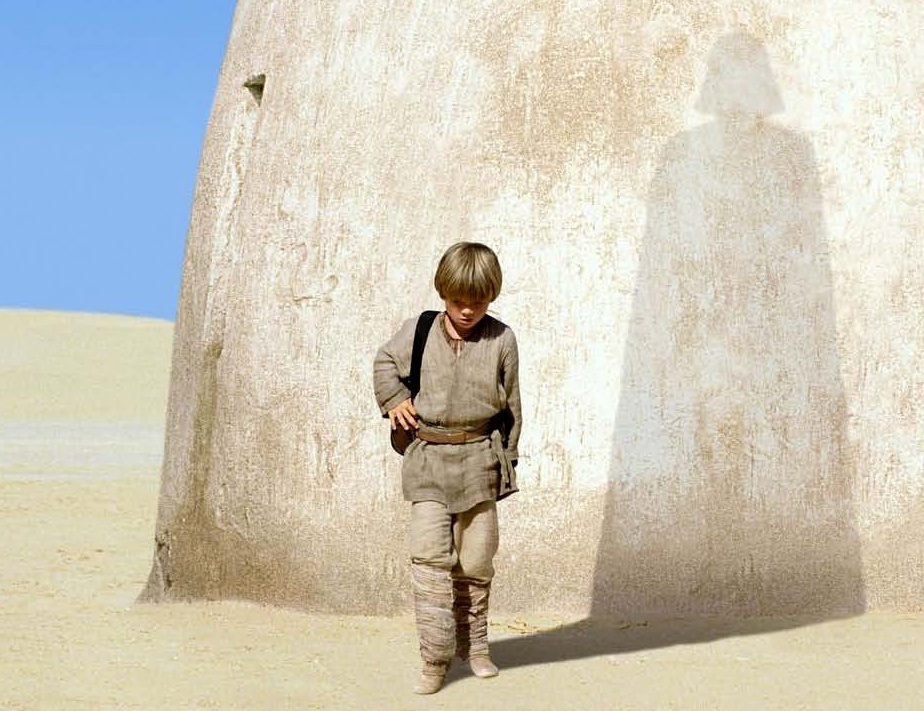Foreshadowing is a vital tactic that’s simpler than it sounds and yet challenging to master.
If this sounds confusing, it’s because it is.
Hey, welcome to writing fiction! Now, don’t panic.
The good news is that once you learn foreshadowing, your stories stand out and skyrocket to the next level.
Here’s what we’ll learn in this article
- What’s foreshadowing?
- You can foreshadow pretty much anything you want
- So foreshadowing means putting clues in your story, then?
- Ok. Got it. Where do I use foreshadowing?
- The three sins of foreshadowing:
What’s foreshadowing?
Foreshadowing is paving the way to shock, revelation or relief in your story.
It makes the plot twists believable and the story captivating, by giving readers hints. It makes it easier for readers to buy your story.
But. Foreshadowing isn't just dropping clues in your early stages.
Read on.
You know when you visit someone and there’s some cooking going on, but you can’t quite put your finger on what’s cooking, based on the smell alone?
The smell’s rather familiar, but you somehow know and hope that maybe it’s not exactly what you’re expecting.
You’re expecting something thrilling or shocking would happen, that will jolt you from your day to day life. Ok, this is going a bit far with just a dish.
But you know what I mean. At a basic level, we want to be surprised.
Same thing with foreshadowing.
Examples of foreshadowing
There will be spoilers ahead, from Game of Thrones and Harry Potter.
How a Game of Thrones foreshadowing looks like
Ned Stark’s execution by beheading was foreshadowed in numerous occasions.
Following the three-fold revelation strategy that Martin uses to foreshadow events in Game of Thrones1, Ned Stark’s death was foreshadowed:
- By the symbolism of the dead stag and the direwolf, from the beginning of the series, when Eddard and his entourage return from beheading the Night’s Watch deserter.
- By the Lannisters, killing Lady, Sansa’s direwolf.
- By the secret conversation between Varys and Illyrio, the one that Arya witnesses in the dungeons – this, by the way, made me realize why Starks will always lose the game of thrones.
Ned Stark’s death wasn’t foreshadowed just in those three places, but I think those were the most obvious stages and the most relevant.
The foreshadowing where Arya tells her dather that someone was talking about killing him and the way he reacts and dismisses Arya with her findings, also made me dislike the Starks – all, except Arya – given how, well, weak they are in playing the game of thrones.
Or it just might be a slip in George Martin’s writing, trying to spoonfeed us on how gullible the Starks are. But more about this foreshadowing sin later on.
Seriously now.
If someone told you “hey, I heard some dudes just round the corner, talking about stealing your car,” what would you do?
Making the Starks unskilled players in the game of thrones is an even greater foreshadowing that’s setting up the Starks as the main losers of the series:
- Tyrion is fascinated by how gullible and ill-fit the Starks are for the game, the whole time he’s taken captive by Catelyn.
- The Freys playing the “mayhaps” game, where the King must hold to an oath, unless he slips in the word “mayhaps” unnoticed.
Look at the discussion between Frey and Robb Stark, before the Red Wedding takes place. Frey slips in a “mayhaps” when the Starks ask for food.
It’s not a shocker that he doesn’t keep his promise. He even mocks Robb about it. “You wanted to cross the river and get an army in exchange for my daughter’s hand, but you didn’t say mayhaps.”
How a Harry Potter foreshadowing looks like
This lore is so chock full of foreshadowing that we’re getting kind of spoiled here. But we’ll go for the most obvious one.
Snape as a double agent
It’s not a mystery anymore that the great unsung hero of the Harry Potter books and movies is Severus Snape, the greasy haired double agent, who ultimately saved Harry Potter’s life countless times, by foiling Voldemort’s plans.
There’s a scene, in the first book, that many people miss, but it’s there if you look hard enough.
Harry, who was starting to feel warm and sleepy, looked up at the High Table again.
Hagrid was drinking deeply from his goblet. Professor McGonagall was talking to Professor Dumbledore.
Professor Quirrell, in his absurd turban, was talking to a teacher with greasy black hair, a hooked nose, and sallow skin.
It happened very suddenly. The hook-nosed teacher looked past Quirrell's turban straight into Harry's eyes — and a sharp, hot pain shot across the scar on Harry's forehead.
Harry Potter and The Philosopher's Stone - JK Rowling
I’ve bolded those words for you, so you can see JK Rowling’s trick at work.
JK Rowling sets up the double standard for Snape, by confusing us to his true intentions.
“past Quirrell’s turban” tells us that Voldemort is there, in one way or another. And he is, but not through Snape, as we expect it at first. It’s in Quirrel’s turban.
By the end of the series, we find out that Snape was actually working for Dumbledore, in revenge for Voldemort killing Lily Potter, the woman Snape loved and the woman Harry reminded him of, by looking into his eyes.
JK Rowling shows us how, almost always, the first thing people usually look for when they meet Harry Potter is his scar.
Snape’s not doing that, though. He’s looking straight into Harry’s eyes. Lily’s eyes.
If you go back and re-read the books, Snape gives himself away as a good guy by not focusing on the scar, but on his love for Lily.
Remember this hint:
If your foreshadowing is obvious, make sure you attach lots of emotion and meaning to it.
Because, otherwise, it's the same with that cooking analogy: it either smells delicious or it makes you throw up.
You can foreshadow anything
Foreshadowing is giving hints, implying and poking at your imagination.
It’s basically promising something that will or won’t be delivered.
Foreshadowing means that you’re building tension but without being overt. It’s shipped in the form of some meaningless clue or some minor dialogue.
Just how JK Rowling uses foreshadowing in her Harry Potter books.
Make this experiment:
While you're reading a book or watching a series and you come across something that doesn't need too much attention but it's there and the author points you in that direction, you might be experiencing foreshadowing then and there.
So foreshadowing means putting clues in your story, then?
It may be. But it’s not a must.
It depends on what you may call a clue.
In book Harry Potter and the Order of the Phoenix, the fifth installment in the series, we have this passage:
The others' hushed voices were giving Harry an odd feeling of foreboding; it was as though they had just entered the house of a dying man
When Harry first enters Grimmauld Place
This is a dead-giveaway, once you re-read the books, that points directly at Sirius Black, Harry’s godfather.
Think of foreshadowing like you’d think about character development: from the moment you learn how it works, it’s there for you to see it and take action.
Actually, foreshadowing is very useful when it comes to building a character and painting it inside your readers’ minds.
Foreshadowing is used to make the characters believable and fleshed out.
You can find out more about foreshadowing and character development in the upcoming Fiction Coach Masterclass or you can check out the post about how Arya kills The Mountain has been foreshadowed, based on the heavy foreshadowing that George Martin has used when building her character.
Ok. Got it. Where do I use foreshadowing?
You could argue that everything in the first part of your story – the first 25% – can be used as foreshadowing.
You can foreshadow all the way up to the Resurrection Plot Point – approximately 75% in the story. After this checkpoint, all foreshadowing will be useless, unless you’re writing a series like Harry Potter.
Actually, foreshadowing is tightly coupled with story structure. You can clearly see how foreshadowing plays out throughout the Harry Potter saga2.
If you want to know more about how foreshadowing and story structure work together, check out the Fantastic Five email course3.
Also, the best way to study foreshadowing is to keep an eye out for it in the stories you love to read or watch, be them books, series, movies or games. Keep a count of those moments and see how they add up to the plot. There’s a difference between foreshadowing and character building, but they both provide a handshake that build a solid story.
As you learn the patterns, you’ll have a solid knowledge and be able to shock your fans with your foreshadowing strategy.
And remember:
Foreshadowing is one of the coolest ways to reward the people who read your books more than just once.
The three sins of foreshadowing
As with everything good, foreshadowing can become one of those tools that can ruin your story, if
- you overuse it,
- you use it to highlight unimportant stuff
- or if you begin to spoonfeed your readers.
Now, let’s see how you can avoid that.
Don’t use excessive foreshadowing
We now know that foreshadowing can be a great tool to draw readers into your story.
But one surefire way to drive them away is to foreshadow virtually everything. This is how you’ll end up killing your story and fail to communicate anything of value.
Think about what you love in your favorite stories. You love a story that’s tight and that moves from point A to point B, with a good amount of foreshadowing.
I don’t think you like stories where the author repeats themselves with things like “no one knew that this would happen” or “what were the odds of this going on?”
Don’t overuse foreshadowing for foreshadowing’s sake, otherwise, you’ll just kill the mood and you’ll make that grievous mistake that oh so many authors make: they tell instead of showing.
By doing this, your readers will get confused with so many possible events coming their way, yet never satisfying their curiosity. And when that happens, you’re in trouble.
Don’t foreshadow excessively. Otherwise you’ll lead people on stuff that’s not interesting and you’ll kill your story.
Don’t foreshadow stuff that’s not interesting
One way to let down your readers is to hint at something that’s about to come up later in the story and when it does it’s not something that impacts your plot or main characters.
Worse, your readers would most likely feel that you’ve taken them for granted and wasted their time, by emotionally investing in something that wasn’t there from the beginning.
Let me take a second here and add something that most authors seem to take for granted:
you have a relationship based on trust with your readers.
If you fail to deliver multiple times on that trust, your readers will abandon you and your stories. Aside from giving you their money for being entertained, they give you something much more valuable: their time.
Cherish this trust and reward your readers by using foreshadowing responsibly.
Don’t spoonfeed with foreshadowing
No matter the genre of your fiction, your writing should be suspenseful. Take a page from JK Rowling’s book and learn how JK Rowling made Harry Potter a Mystery.
At the core of every story, there must be something that delights through mystery and suspense.
You know what I mean.
I’m talking about that floating tension that’s keeping your nerves stretched.
If you’re telling instead of showing and you’re trying to help the readers to put the pieces together, you’re doing it wrong.
Stop spoonfeeding.
No one will thank you for it and you’ll end up shooting yourself in the foot.
Foreshadowing is useful, as you’ve probably come to guess by now.
It’s your drooling sidekick, geeking out whenever you’re around. When you use it right and remember these three pitfalls we’ve just talked about.
Otherwise it’ll just bite you in the ass and drive readers away.
Oh, and before we end this, always remember:
Foreshadowing is one of the coolest ways to reward the people who read your books, more than just once.
If you liked this article and think others should read it, please share it on Twitter



